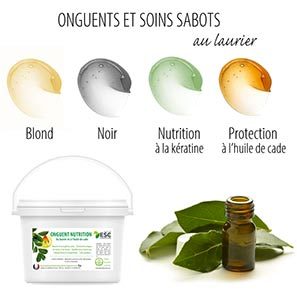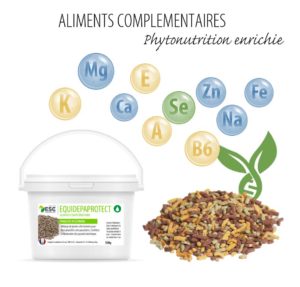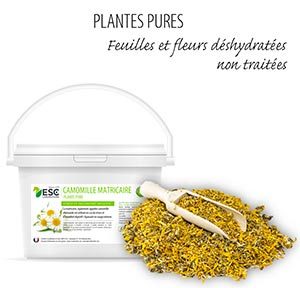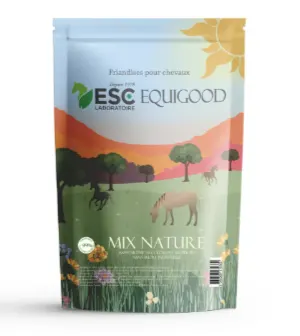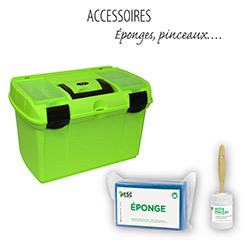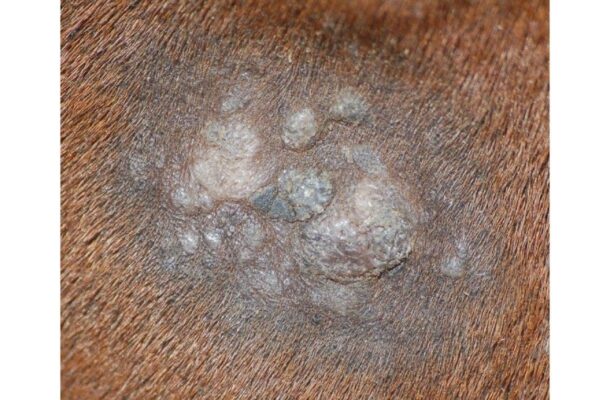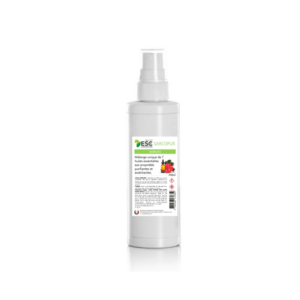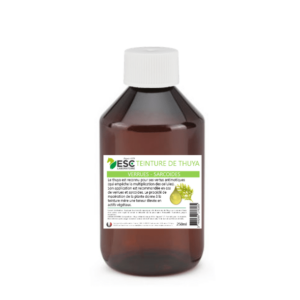The sarcoid is a skin tumor that touches the horse. Generally benign, it affects almost 20% of tumours in horses and can develop anywhere on the body of the animal (even if it is mainly located in the head, limbs and stomach).
Even if it does not pose a risk to the life of the horse, the sarcoid is unaesthetic and can pose a problem for the use of the horse or hinder its movements by its location. In this article, we present you the signs that make it possible to recognize the sarcoid in the horse and the main treatments to treat it. We also share natural solutions to prevent the development of this tumor and prevent your animal from developing a sarcoid.
What is sarcoid in horsesx
The sarcoid is the most common skin tumor in horses. Although it may look like a wart, it is indeed a form of skin tumor. It is locally aggressive because it grows over time and infiltrates skin tissue, and tends to recidivate. It is a benign tumor and not cancer because it does not metastasize. It is most often found on the abdomen of the animal, inside the hind legs, around the sheath, on the chest and around the eyes and ears.
Sarcoids also often appear at the location of old scars, especially in the legs. Indeed, it is areas where flies tend to land and potentially transmit the pathogen (virus) that would cause the disease.
Horses, from foals to middle-aged adults, are most often affected and there may be a genetic predisposition to sarcoids. These may appear alone, as tiny pieces of skin, or in clusters. As they grow, the skin can ulcerate and infect. In summer, they attract flies and can turn into open wounds that will find it very difficult to heal without proper treatment.
Different types of horse sarcoid
There is several types of sarcoids in horses, and in particular the sarcoid:
- Occult: or a flat area on which the horse loses his hair and where a grey and scaly crust is formed, which is often confused with the moth. This type of sarcoid is very often circular, and is found mainly on the face, neck and between the hind legs;
- Verruqueux; characterized by grey and scaly warts. Competitions are more irregular and multiple lesions will tend to appear around the affected area. This sarcoid can develop and become an occult sarcoid.
- Nodular: you can notice small bumps under the skin, fine and shiny. These vary in size, some more than 5 cm in diameter. They are usually found around the groin and eyelids.
- Fibroblast: These are aggressive fleshly masses. They can develop as a result of a skin wound and grow rapidly. These sarcoids are often ulcerated and « suspended » a stem (pediculated) or extremely invasive on the surrounding skin.
- Male: This is the most aggressive type of sarcoid. It spreads through the skin and even along the lymphatic vessels, with tumour tissue cords interspersed with nodules and secondary ulcerous lesions. In this case, the tumor will generally be larger, causing real discomfort or even pain to the horse.
Is the sarcoid a serious condition for the horse?
Sarcoids come from cells called fibroblasts, which play an essential role in wound healing. Fibroblasts also produce scar tissue, which is one of the reasons why sarcoids can be so difficult to treat. Most treatments will indeed tend to stimulate scar tissue, which worsens the problem.
The peculiarity of the sarcoid is that it is in principle neither painful nor pruriginous (which means the horse does not scratch). However, depending on the site of the lesions and their development (when the sarcoid is invasive), exgrowths may occur and disturb the horse. This is particularly the case if it is near the groin, ear or around the eye.
The sarcoids are de more likely to reoffend and become more aggressive if subjected to accidental or deliberate interference, such as friction or unsuccessful treatment attempts. That's why you have to take this tumor seriously before it becomes a problem for your horse. In addition, early treatment will generally be more effective before it becomes large and more difficult to eliminate.
What are the main causes of sarcoid in the horse?
The sarcoid develops especially after a wound (at the scar level or directly around the wound), an insect bite or bite. It will also tend to develop where the skin is thinner.
Several factors may cause a sarcoid in the horse:
- A pathogen (like a virus) For example, Studies appear to prove that bovine papillomavirus can cause certain sarcoids. The cause will be direct contact with a bovine, or indirect contact via an infected horse or insect.
- Genetic predisposition. Some horse breeds seem more prone to sarcoids, including Quarters Horses, Appaloosas and Arab horses...
What are the main treatments for sarcoids in horses?
Although several treatments are available, there is no magic cure for sarcoids and the risk of recurrence is always high. The most suitable treatment for your horse will depend on the position of the tumor, its size and the number of sarcoids.
Among main solutions who offer themselves to the masters, we find:
- Surgical discharge. It is mostly performed under local anesthesia. It should be large enough to remove as many tumour cells as possible. The disadvantage of this intervention is that the failure rate is high. The wound also tends to cause poor healing and the sarcoid to recur rapidly. It is often associated with other local treatments to limit recidivism.
- The ligature. This involves applying a tight band around the base of the tumor. It is only possible if the sarcoid is pedunculate and its base is small in diameter. Although this method may work for some horses, there is a high risk of recurrence and it can be painful for the horse, especially if the sarcoid is in a delicate area.
- Cryotherapy: the tumor is frozen and then destroyed. This is a long and repeated treatment, often performed under general anaesthesia to ensure that the treatment is carried out safely.
- Immunotherapy. This approach consists of injecting substances into the horse for stimulate your immune system to eliminate the tumor. This works well for sarcoids located near the eye, but several treatments are needed, often under sedation. In addition, since the risk of side effects is significant, premedication is systematically administered.
- LRadiotherapy: It has been shown to be effective, but it is an expensive treatment and performed there again under general anesthesia. In addition, radiotherapy is only available in some specialized centres because of the technical difficulties involved.
- Laser removal: A surgical laser is used to remove the tumour, as well as a healthy tissue margin to reduce the risk of leaving cancer cells.
A topical natural solution to relieve and prevent the horse sarcoid
These treatments are both aggressive and costly, they can represent an obstacle for owners as for the horse (if it does not support well anesthesia, for example). So you may want to prefer a natural and less invasive solution, especially if the sarcoid is taken at an early stage (and only a small verruqueous tumor).
SARCOPUR treatment, enriched with essential oils
In this case, you can turn to a topical solution as our Sarcopur essential oils treatment or our tincture of thuya. Thiya is recognized for its ability to prevent cell multiplication and eliminate warts and sarcoids. The maceration process of the plant gives the mother dye a high level of plant actives with antiviral and keratolytic properties.
Thiya mother dye is traditionally associated with wart treatment, but it can also be used for skin conditions such as mycosis, psoriasis and to calm itching. In order to strengthen the action of this external treatment, we advise you to supplement your horse with magnesium and with our specific plant mixture Sarcomix to be distributed in regular cures from 3 weeks to 3 months as appropriate.
Thuya mother dye is ideal for treating warts and sarcoids
Whatever the therapeutic option you choose, it is essential that treatment be continued until a visible result is obtained. If treatment is discontinued prior to sarcoid elimination, there is a high risk of recurrence, sometimes with a more severe lesion than initially present. If you notice signs of sarcoid in your horse, consult a veterinarian who can assess the situation and recommend the best treatment for your animal.



